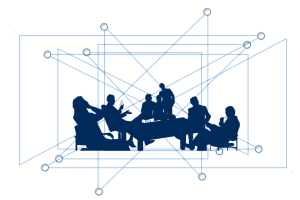I have recently completed my UBC Certificate in Organizational Coaching program through Extended Learning. I was consistently invited to lean into the discomfort in the zone of proximal development (Vygotsky, 1935) and this learning journey has been powerfully transformative for me.

Bringing in my lenses as an educational developer, a distress services provider, a scientist, and a life-long learner, my evolving conceptualization of coaching is a mutual commitment to the process of learning that ultimately enhances my client’s internal capacity to make meaningful and sustainable changes toward their stated goals. I strive to show up as my authentic self, with presence, curiosity, and vulnerability that support my clients to dive into the learning zone, or the zone of proximal development (Vygotsky, 1935). As a thought partner, I bring integrity, honesty, and accountability into conversations to explore, discover, collaborate and design the pathways to my clients’ intentional success.
It is exciting to learn how others draw on their expertise to incorporate coaching into various educational contexts (Lofthouse, 2019). At UBC, there is a growing coaching culture and I have access to a wealth of resources as an internal coach. I am committed to gathering stories from fellow internal coaches to learn how they leverage their coaching skills to affect change within UBC.
As an early career educational developer, I will have to continue to increase my level of self-awareness and self-regulation within my work context as I try to bring a coach approach to my work. I am eager to integrate this newly developed coaching skills to partner with faculty members to “develop teaching quality, to enable inter-professional learning, and to facilitate positive and productive relationships through cultural change in educational communities” (Lofthouse, 2019). I hope to deepen relationships with educators by creating intentional learning spaces for dialogue, modelings a strength-based practice, and extending their skills and knowledge through co-construction!
References
- Lofthouse, R. (2019). Coaching in education: A professional development process in formation. Professional Development in Education, 45(1), 33-45.
- Vygotsky, L. (1935 [2011]). The dynamics of the schoolchild’s mental development in relation to teaching and learning (trans. A. Kozulin). Journal of Cognitive Education & Psychology, vol. 10, no. 2, pp. 198–211.
 Photo Credit:
Photo Credit: 
